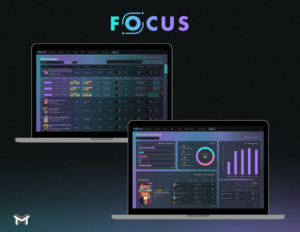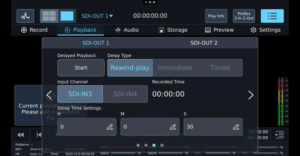DOTSCREEN – Native app development vs. using a coding framework

Vincent Gattone, DOTSCREEN
In the world of video streaming, the choice between native app development and using a coding framework is a common question providers face. This decision impacts performance, cost, flexibility, and time to market. For companies like DOTSCREEN, which leverages native app development to provide modern video streaming applications across all connected devices, the stakes are particularly high. This article explores the benefits of native app development over coding frameworks, emphasizing why native development is often the preferred choice for high-performance video streaming applications.

Performance benefits
Native app development involves creating applications for a specific platform, such as iOS or Android, using the platform’s native programming languages (Swift for iOS, Kotlin for Android). This approach ensures that the app is optimized to leverage the full potential of the device’s capabilities.
Native apps are generally faster and more responsive because they are compiled into machine code. This leads to better performance, particularly for resource-intensive video streaming applications that require smooth playback and quick load times. Native development allows developers to utilize platform-specific features and APIs. This is critical for streaming applications that may need to leverage hardware acceleration, custom codecs, or other device-specific functionalities to deliver the best user experience.
Coding frameworks, like React Native or Flutter, allow developers to write code once and deploy it across multiple platforms. While this can be efficient, there are performance trade-offs. Apps built using frameworks are often not as optimized for performance as native apps. They might run an additional layer of code, which can introduce latency, a significant drawback for streaming apps where buffering and load times need to be minimized.
Frameworks might not fully support all platform-specific features, leading to compromises in functionality and performance. For example, accessing advanced video processing capabilities might be limited or less efficient compared to native development.
Cost implications
Developing native apps typically requires separate codebases for each platform, which can increase development costs. However, this investment often pays off in the long term.
The need for specialized developers for each platform (such as iOS, Android and Smart TVs) can lead to higher initial development costs. However, this ensures that each version of the app is fully optimized for each target platform. Native apps often have fewer bugs and performance issues, leading to lower maintenance costs over time. The initial higher cost can be offset by reduced expenses in troubleshooting and updates.
Frameworks promise cost savings through code reuse and a unified development process. With a single codebase for multiple platforms, the initial development cost can generally be lower by about 10-20% on the high end. This can be particularly advantageous for startups or companies with limited budgets. However, the potential for increased maintenance costs exists due to compatibility issues and performance limitations, especially in the highly fragmented broadcast industry. The need for platform-specific fixes and optimizations can erode initial savings.
Flexibility
Native apps offer unparalleled flexibility and control, essential for delivering a top-notch streaming experience. Developers can leverage all device features, ensuring the app performs optimally across different devices. This flexibility is crucial for video streaming apps that need to deliver high-quality content without interruptions. Native development allows for greater customization of the user interface and user experience, ensuring the app meets specific design and functionality requirements, with little to no compromises or sacrifices in performance.
While frameworks provide some level of flexibility, they come with limitations. The ability to use a single, unified codebase across platforms can streamline the development process. However, this often means compromising on the app’s ability to fully exploit platform-specific features. It is important to understand the target platform as well. For example, for Android and iOS devices, a coding framework can bring some benefits, but for fragmented platforms such as Smart TVs or set-top-boxes, coding frameworks could be very problematic.
Frameworks can limit the degree of customization, potentially impacting the user experience. For streaming applications, this can mean less control over how content is displayed and interacted with.
Time to market
Native development can result in a longer time to market due to the need to develop separate codebases. While the initial launch may take longer, the resulting apps are often more stable and better performing, which often leads to a more successful launch and user retention. A longer time to market can be mitigated by the use of agile methodology, effective project management and a multi-phased development approach currently used by DOTSCREEN.
Frameworks can accelerate the development process, offering a quicker path to market.
With a single codebase, development and deployment across multiple platforms are faster, allowing companies to launch their apps more quickly. Frameworks are ideal for rapid prototyping and MVP development, enabling quicker feedback and iteration.
DOTSCREEN’s approach
DOTSCREEN takes advantage of the benefits of native app development in the video streaming space. By focusing on native development, DOTSCREEN ensures its streaming applications are optimized for performance across all connected devices, regardless of platform technology.
DOTSCREEN offers smooth, responsive, and high-performing solutions for a variety of platforms, including smart TVs, game consoles, and mobile devices, that meet the demanding expectations of users. Their platform-agnostic expertise in native development allows the full capabilities of each device to be utilized.

Choosing between native app development and a coding framework for video streaming applications involves balancing performance, cost, flexibility, and time to market. Native app development offers superior performance, greater flexibility, and long-term cost benefits, making it the ideal choice for companies focused on delivering high-quality streaming experiences. Whereas the framework approach can come at lower costs and shorter initial time to market, typically only by 10 to 20% comparatively. Which approach is right comes down to a company’s business strategy, target market and environment. No two streaming services are the same.
DOTSCREEN’s commitment to native development underscores the advantages of this approach, providing a benchmark for excellence in the industry. By choosing native development, companies can ensure their video streaming applications meet the highest standards of performance and user satisfaction.









